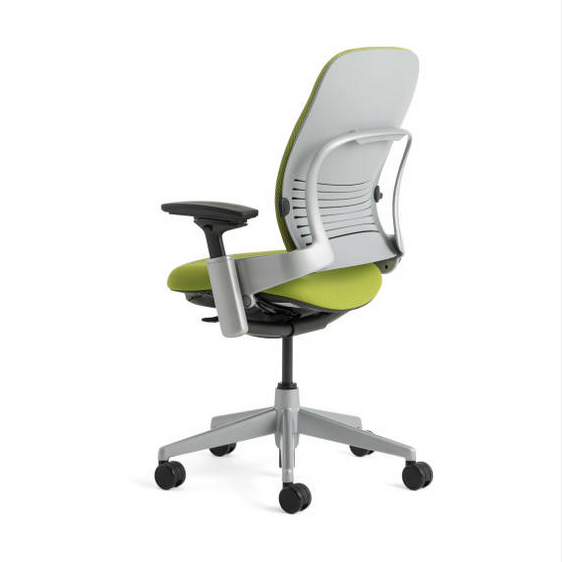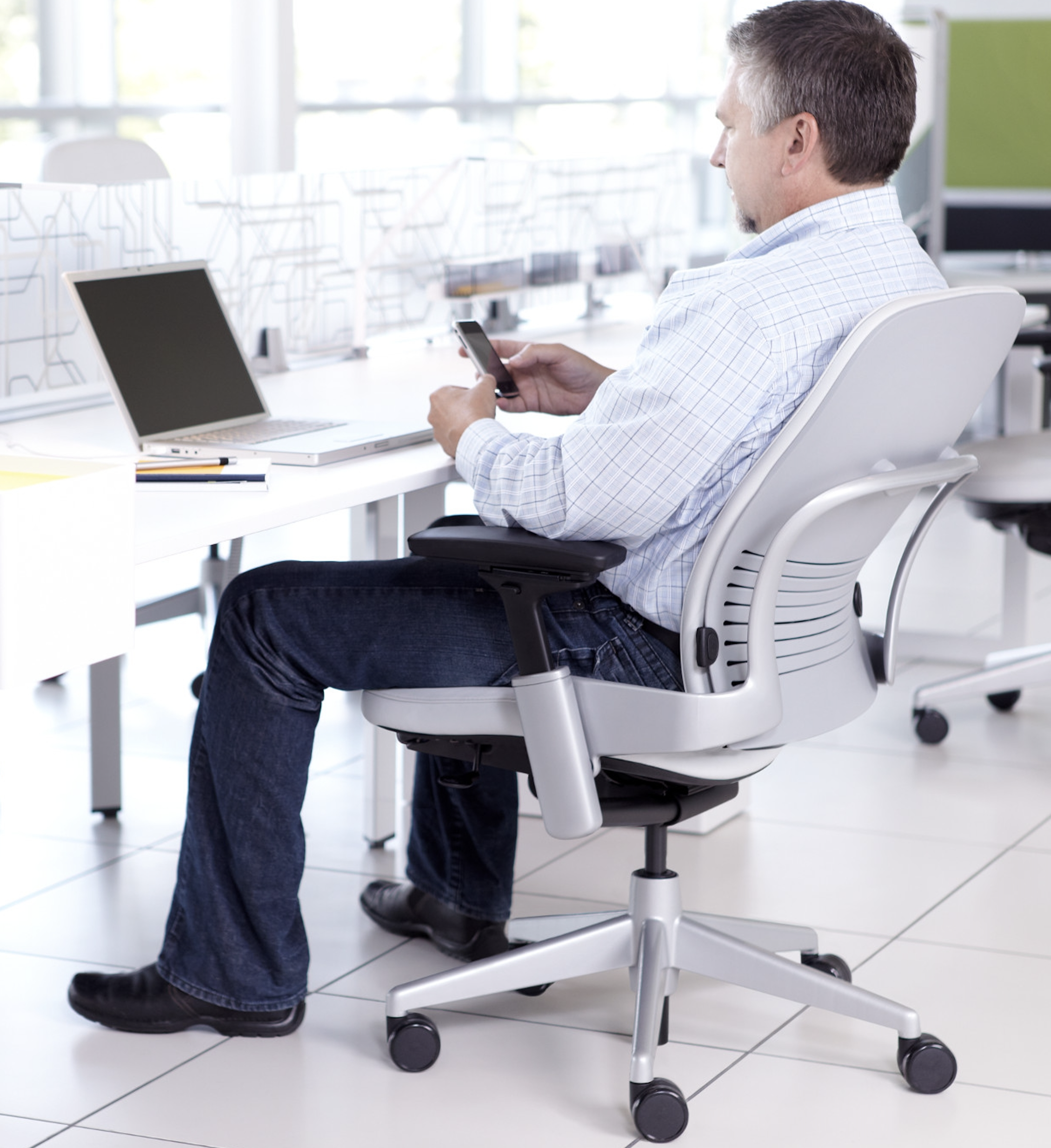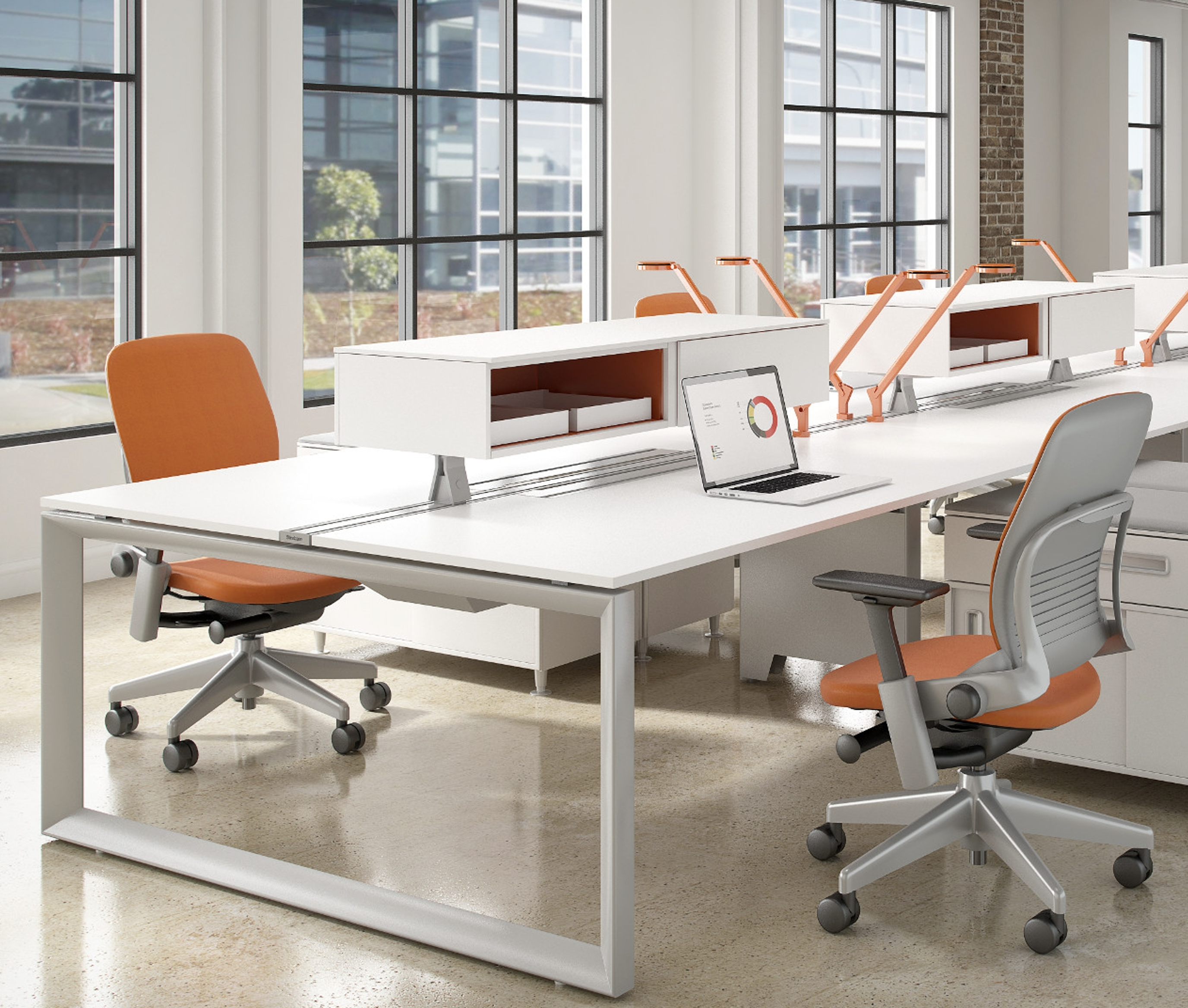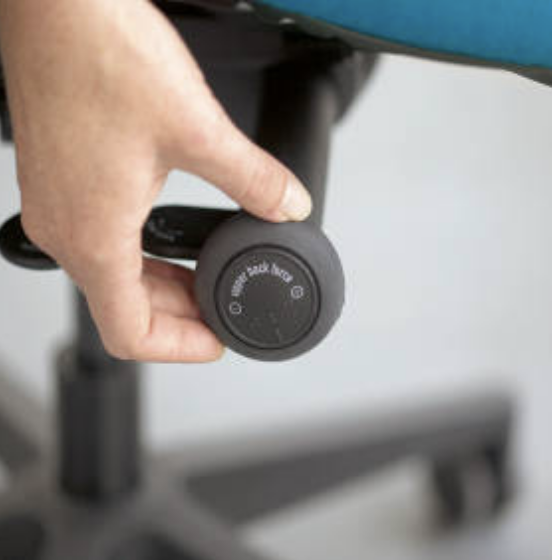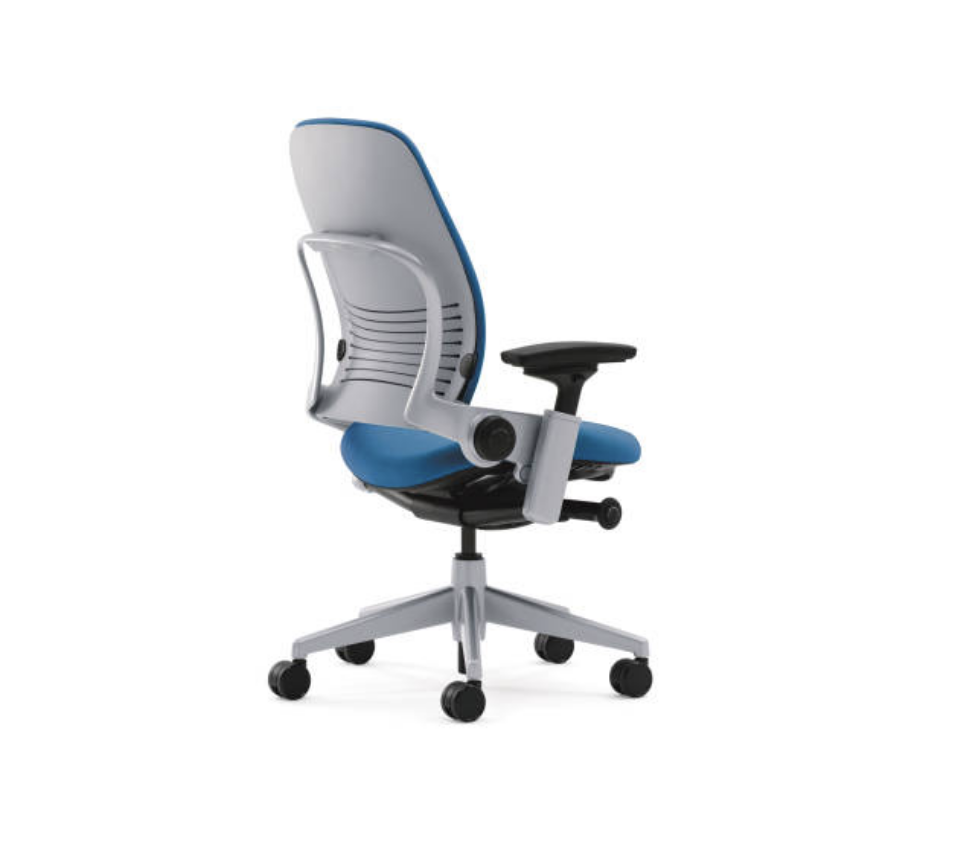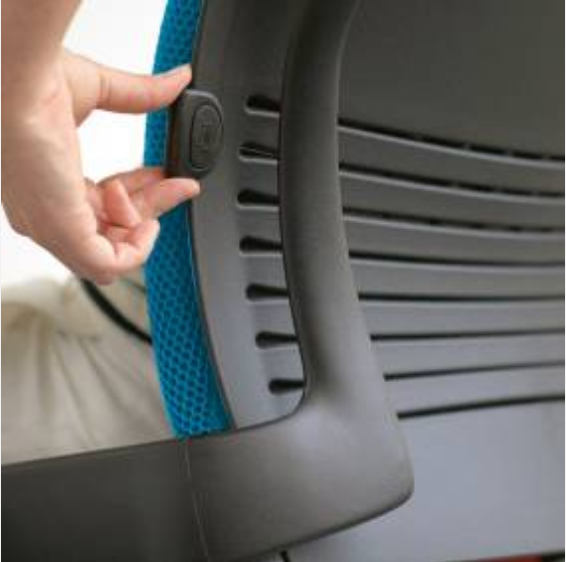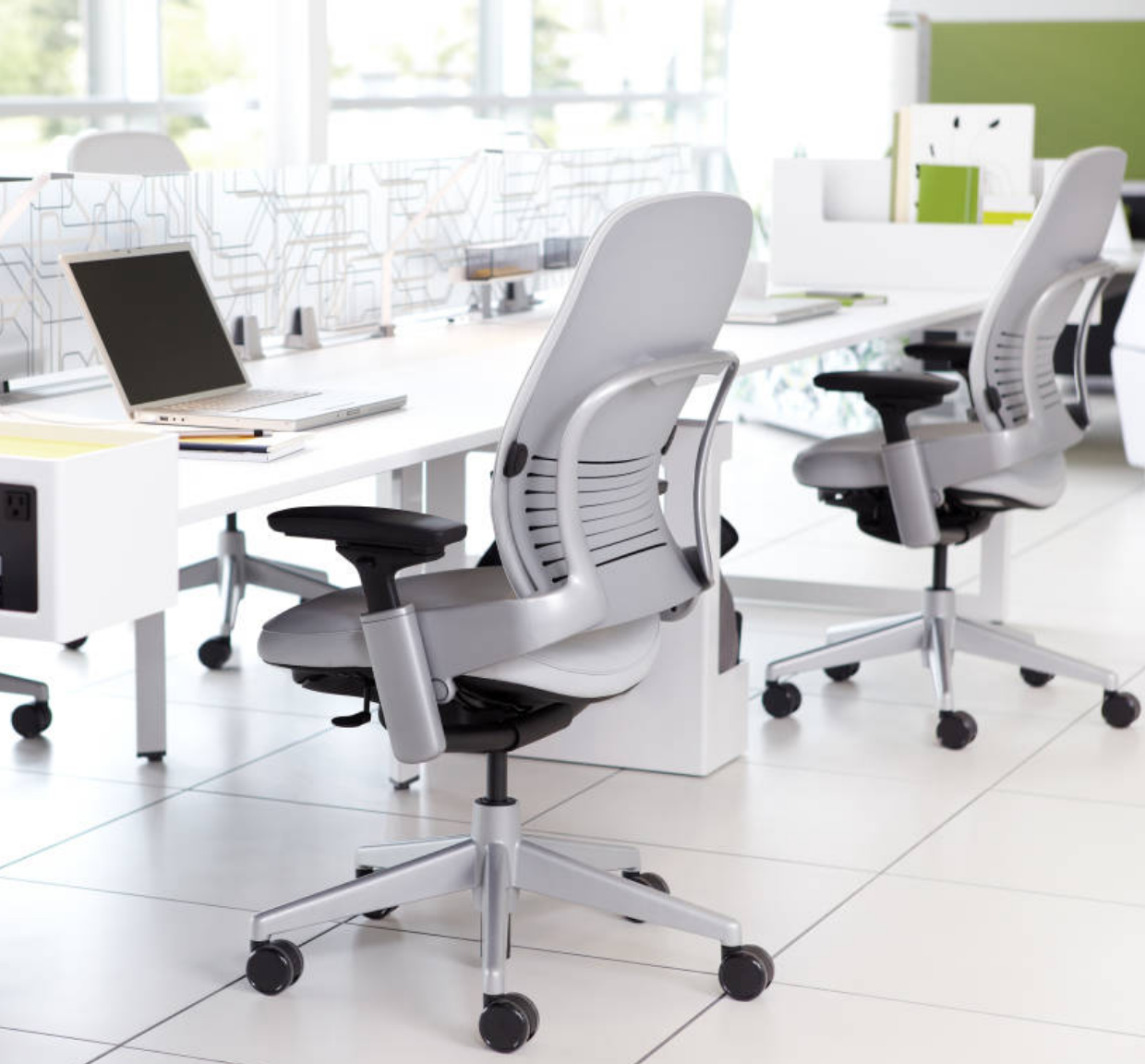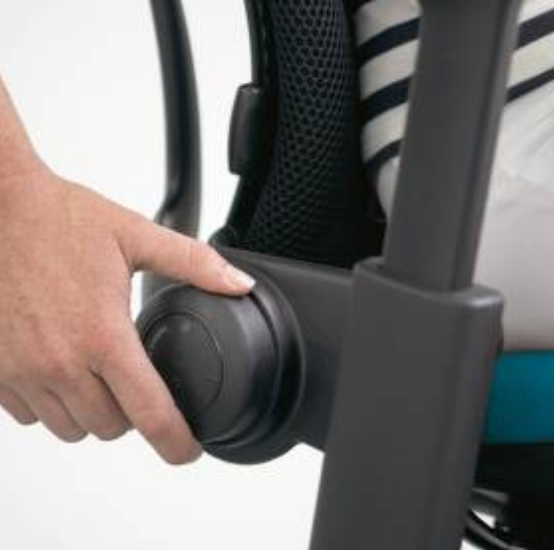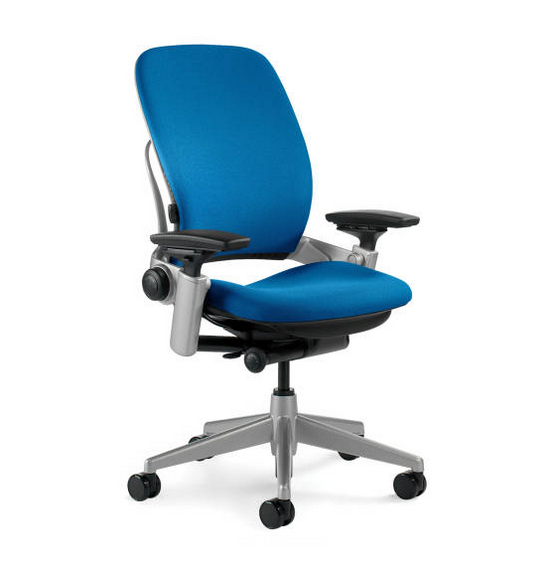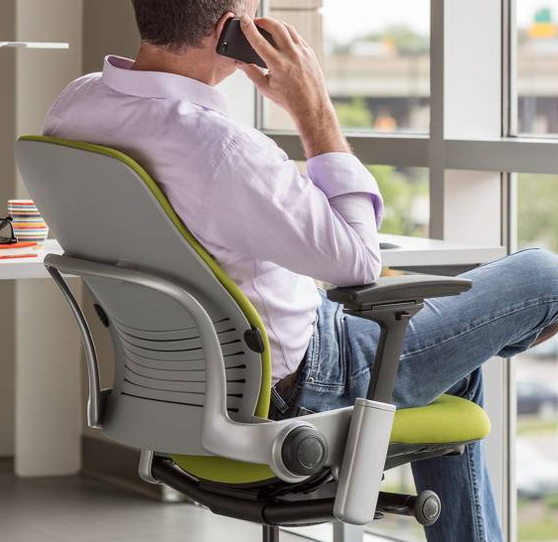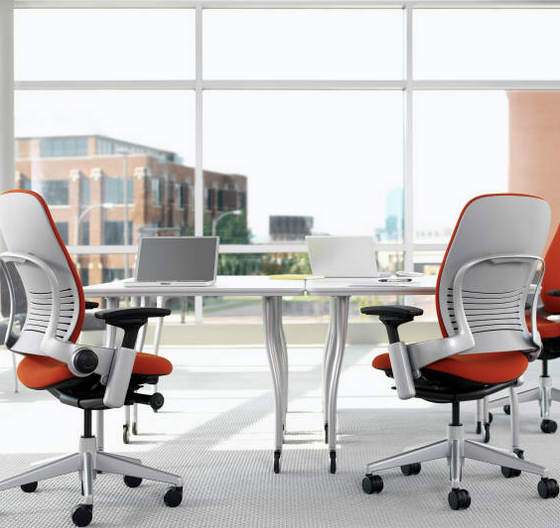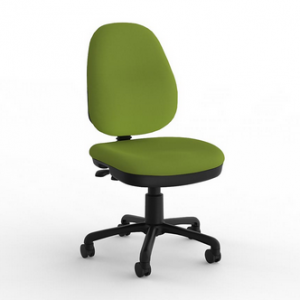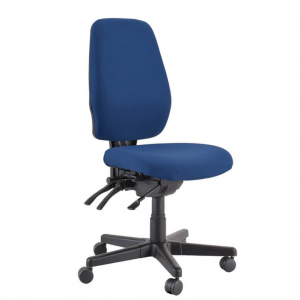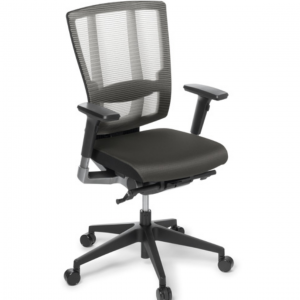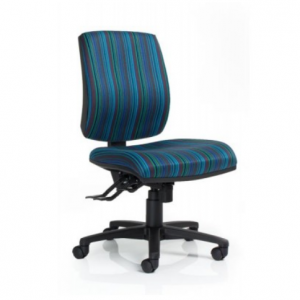Leap
THE RESEARCH THAT ADVANCED OUR THINKING OF HOW A CHAIR NEEDS TO SUPPORT THE BODY LED TO:
FOUR KEY DISCOVERIES
The spine doesn’t move as a single unit. When you recline, your upper spine moves backward and your lower spine arches forward. Each individual’s spinal motion is unique. Even for people of identical size, age, and gender, each spine moves differently. The upper and lower back require different amounts and types of support. Your lower back requires firm, constant support while your upper back requires more support as you recline. Vision and reach impact your posture. When you recline in traditional chairs, the distance between you and your work can increase, which in turn can strain your eyes, arms and neck.
THESE FOUR DISCOVERIES BECAME THE GUIDELINES FOR DESIGNING THE LEAP® CHAIR AND THE FOUNDATION FOR THE FOLLOWING ALIVE SEATING™ PRINCIPLES.
MOVEMENT
Moving helps reduce pressure on the spine, sends oxygen to your muscles, and increases blood flow to your brain. Movement is healthy and your chair should support your body as you move.
ORIENTATION
Changes in posture help you stay comfortable and more attentive. Leap seating’s Natural Glide System™ enables you to comfortably recline without straining your eyes, neck, or arms.
FIT
Your body is unique. You need a chair that easily adjusts to fit you, your preferences, and how you work.
SUSTAINABILITY
A chair that is good for people should also be good for the environment. Every material, every stage of a Leap chair’s life, is designed to respect and nurture human and environmental health. One more reason to be comfortable with Leap.

